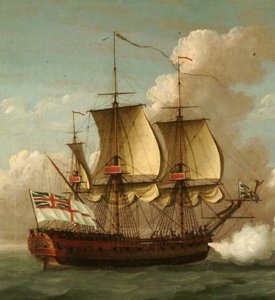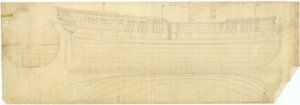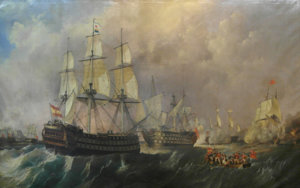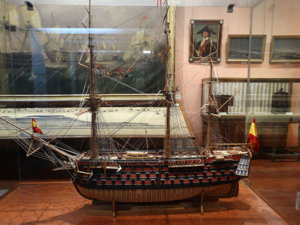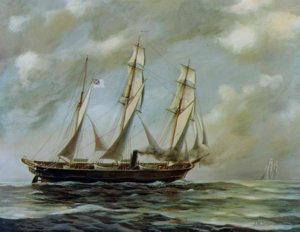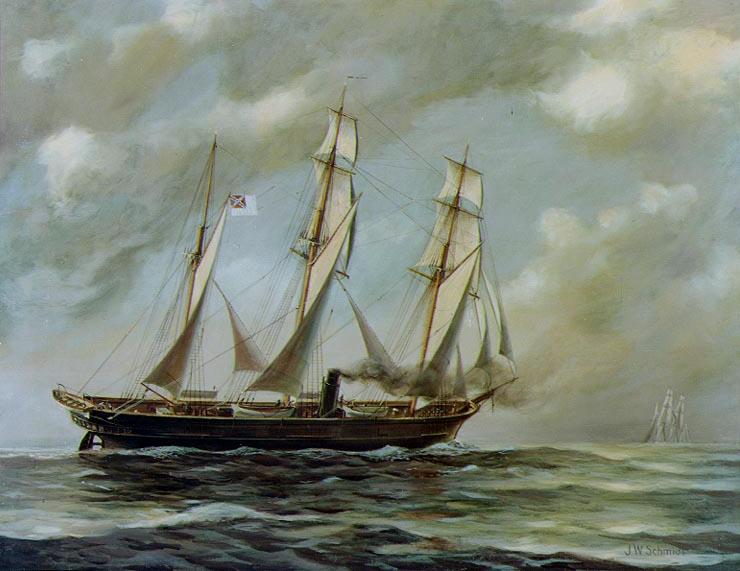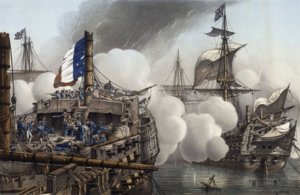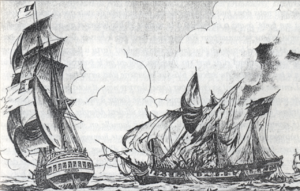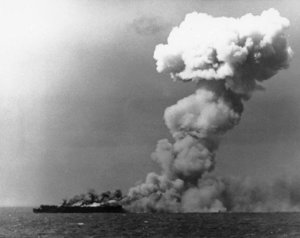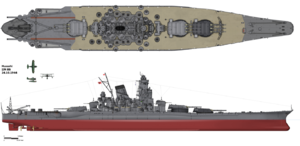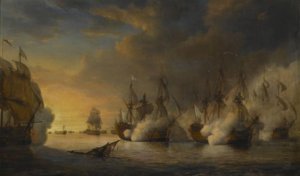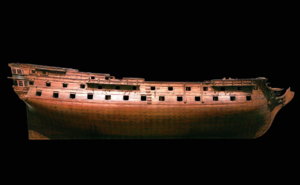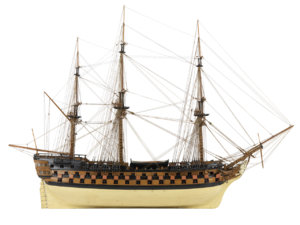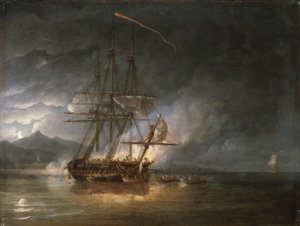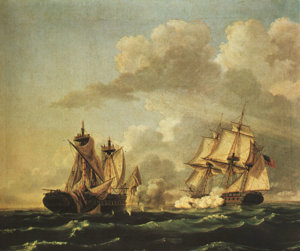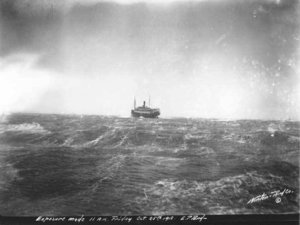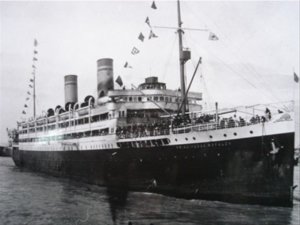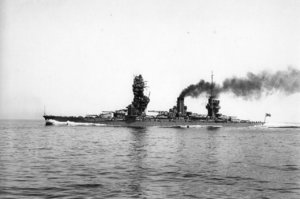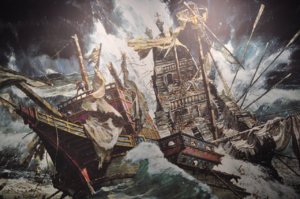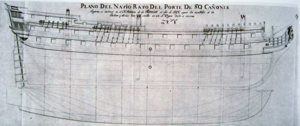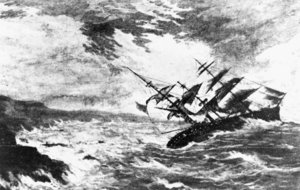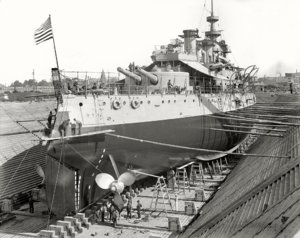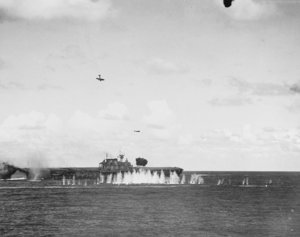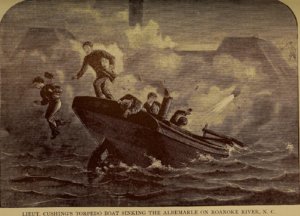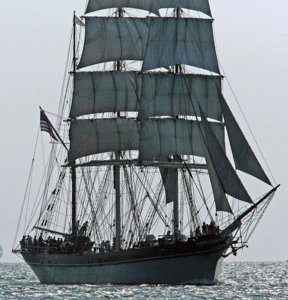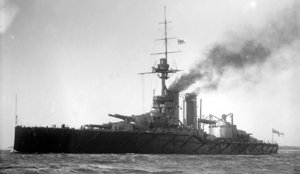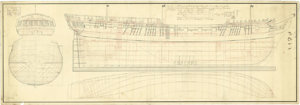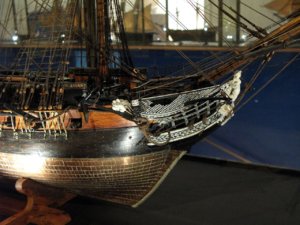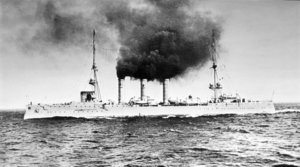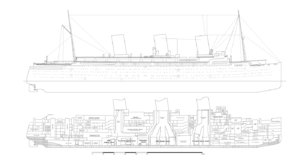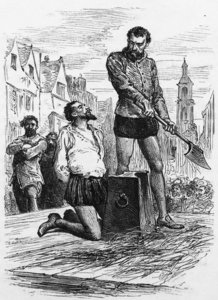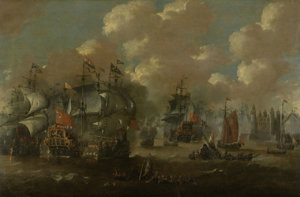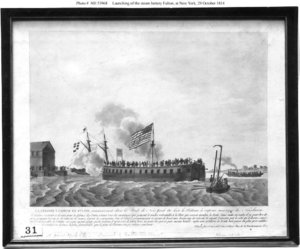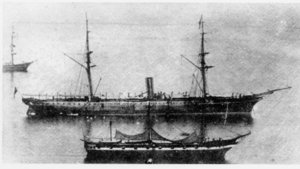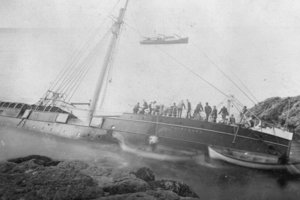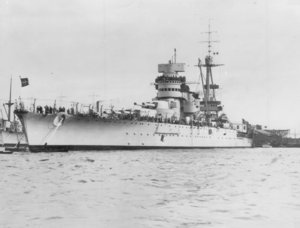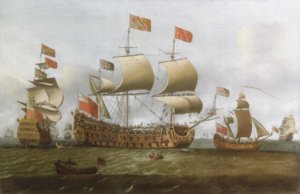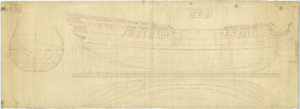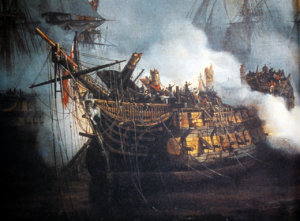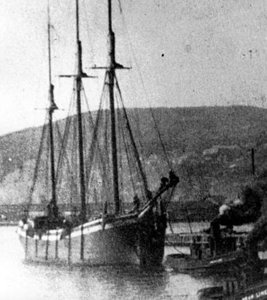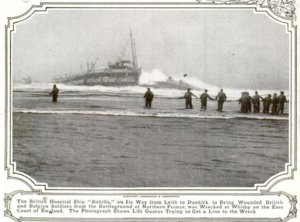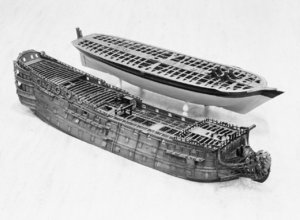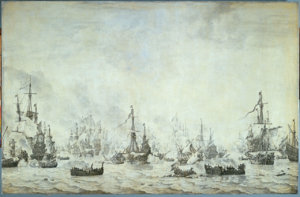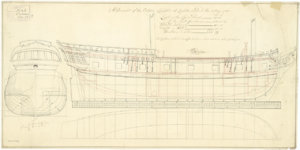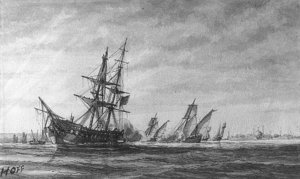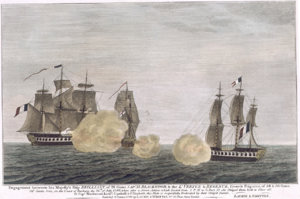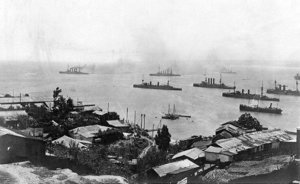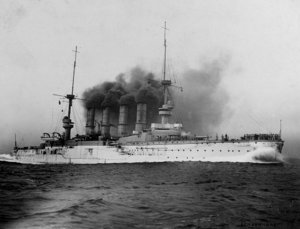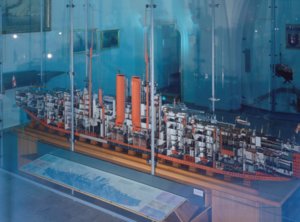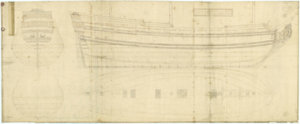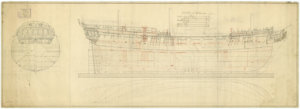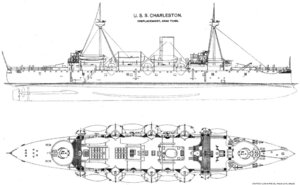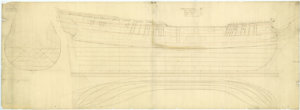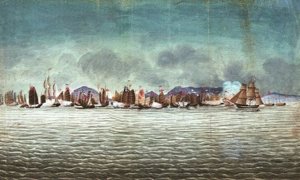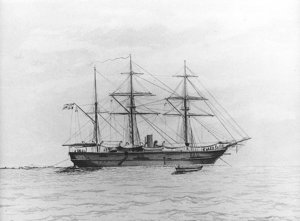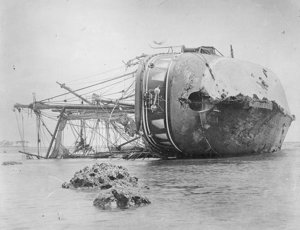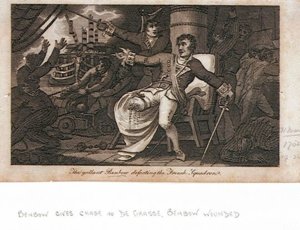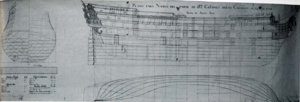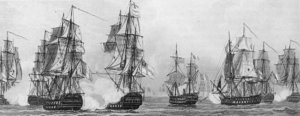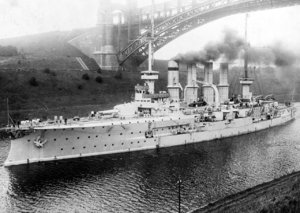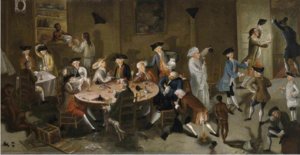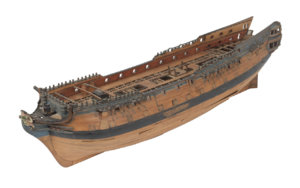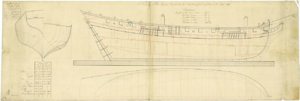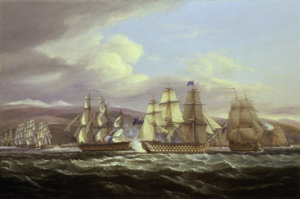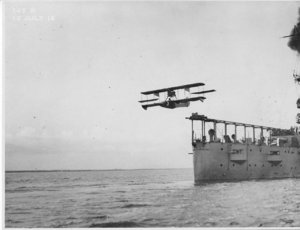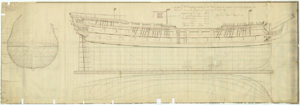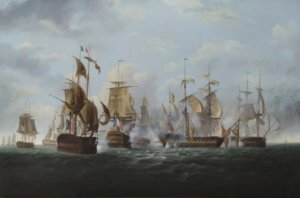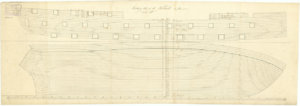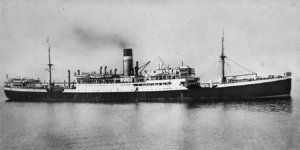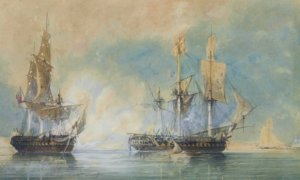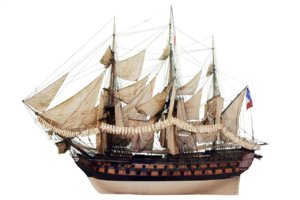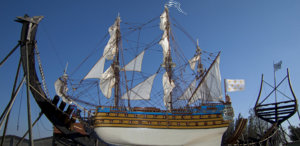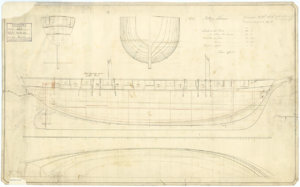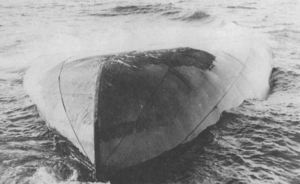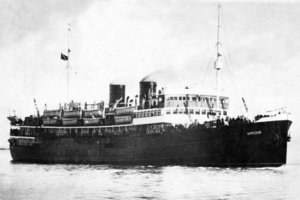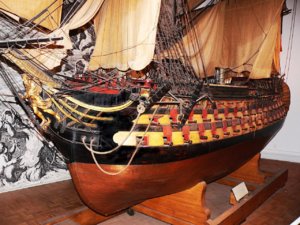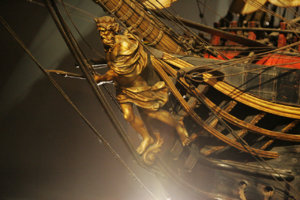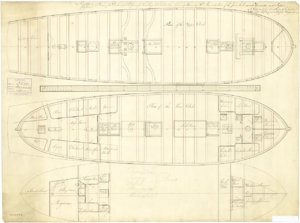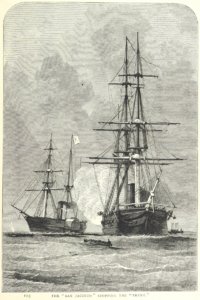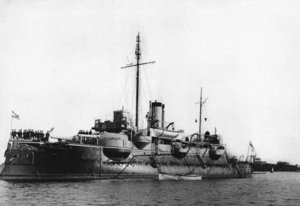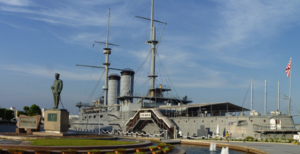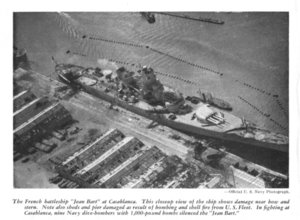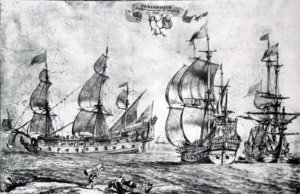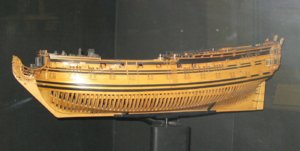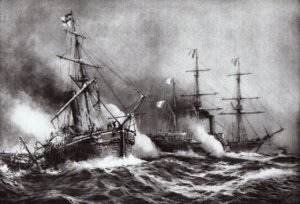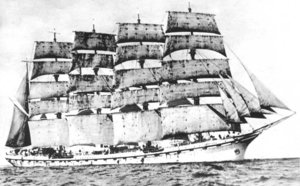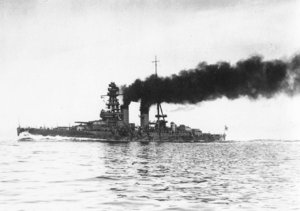Today in Naval History - Naval / Maritime Events in History
22nd of October
1633 – The Ming dynasty defeats the Dutch East India Company.
The Battle of Liaoluo Bay (Chinese: 料羅灣海戰; pinyin: Liàoluó Wān Hǎizhàn) took place in 1633 off the coast of Fujian, China; involving the Dutch East India Company (VOC) and the Chinese Ming dynasty's navies. The battle was fought at the crescent-shaped Liaoluo Bay that forms the southern coast of the island of Kinmen. A Dutch fleet under Admiral Hans Putmans was attempting to control shipping in the Taiwan Strait, while the southern Fujian sea traffic and trade was protected by a fleet under Brigadier General Zheng Zhilong. This was the largest naval encounter between Chinese and European forces before the Opium Wars two hundred years later
https://en.wikipedia.org/wiki/Battle_of_Liaoluo_Bay
1707 – Four British naval vessels run aground on the Isles of Scilly because of faulty navigation. In response, the first Longitude Act is enacted in 1714.
The Longitude Act was an Act of Parliament of the United Kingdom passed in July 1714 at the end of the reign of Queen Anne. It established the Board of Longitude and offered monetary rewards (Longitude rewards) for anyone who could find a simple and practical method for the precise determination of a ship's longitude. The Act of 1714 was followed by a series of other Longitude Acts that revised or replaced the original

 en.wikipedia.org
en.wikipedia.org
1793 - HMS Agamemnon (64), Cptn. Horatio Nelson, met 5 French frigates and engaged Melpomene (40) before withdrawing.
The Action of 22 October 1793 was a minor naval engagement fought in the Mediterranean Sea during the War of the First Coalition, early in the French Revolutionary Wars. During the engagement a lone British Royal Navy ship of the line, the 64-gun HMS Agamemnon, attacked the French Navy large frigate Melpomène, part of a larger squadron, off the coast of Sardinia. Although Agamemnon chased Melpomène some distance through the night and inflicted significant damage, the French frigate was able to escape following the arrival of the rest of its squadron under Commodore Jean-Baptiste Perrée. The French ships later anchored in Corsican harbours to land reinforcements for the French garrison on the island, where the population was in open revolt.
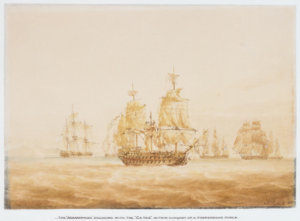
The engagement is notable for being the first action of the war fought by Captain Horatio Nelson, then a junior captain in the Mediterranean Fleet. Nelson would go on to lead naval shore parties in the Invasion of Corsica the following year, during which the entire French squadron was captured or destroyed. He later achieved notable successes in a number of crucial battles during the war and is remembered as one of Britain's greatest military heroes.

 en.wikipedia.org
en.wikipedia.org

 en.wikipedia.org
en.wikipedia.org
1794 - HMS Centurion (50), Cptn. Osborn, and HMS Diomede (44) engaged and driven off from blockading Mauritius by French squadron Prudente (36), Cybèle (40), Jean Bart (20) and Courier (14).
The Battle of Île Ronde was a minor naval engagement between small French Navy and British Royal Navy squadrons off Île de France, now named Mauritius, in the early stages of the French Revolutionary Wars. The battle was fought over control of the waters around Île de France, which was under blockade from the British squadron as French warships and privateers operating from the island posed a significant threat to vital British trade routes connected to British India and China.
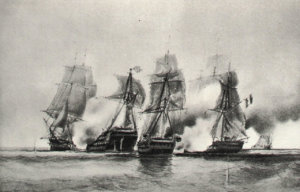
In an attempt to neutralise the island, the British commander in the region, Peter Rainier ordered the 50-gun HMS Centurion and 44-gun HMS Diomede to institute a blockade, which began in October 1794. Concerned by food shortages and a rebellious slave population the French naval commander Jean-Marie Renaud led his small squadron comprising frigates Cybèle and Prudente and three smaller vessels to drive off the British squadron. On 22 October, the squadrons met off Île Ronde, an islet off northern Île de France.
The battle lasted two and a quarter hours, in which Centurion and Cybèle fought a close duel which left both ships badly damaged. Supported by the remainder of the squadron, Cybèle successfully withdrew under fire, but Centurion, without support from the distant Diomede was also forced to retire for repairs. Unable to continue the blockade the British force returned to India, allowing food supplies to reach Île de France. Due to the necessity for campaigns against Dutch Ceylon and the Dutch East Indies, the British blockade was not renewed, but the French were unable to take advantage due to increasing civil unrest among the island's population.

 en.wikipedia.org
https://en.wikipedia.org/wiki/HMS_Centurion_(1774)
en.wikipedia.org
https://en.wikipedia.org/wiki/HMS_Centurion_(1774)
1805 - Trafalgar prizes Berwick (74) and Fougueux (74) wrecked or foundered in a storm after the battle.
Berwick fought at the Battle of Trafalgar, where Achille re-captured her. Berwick sank near Sanlúcar in the tempest the following day after her French prisoners cut her cables. Although Donegal was nearby and quickly sent boats, many of the c.200 persons aboard Berwick lost their lives
Fougueux was driven ashore near Torre Bermeja on the coast of Spain and was wrecked. Only 25 men aboard, British prize crew and French prisoners, survived.
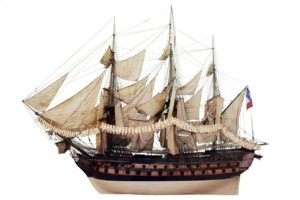
https://en.wikipedia.org/wiki/French_ship_Fougueux_(1785)
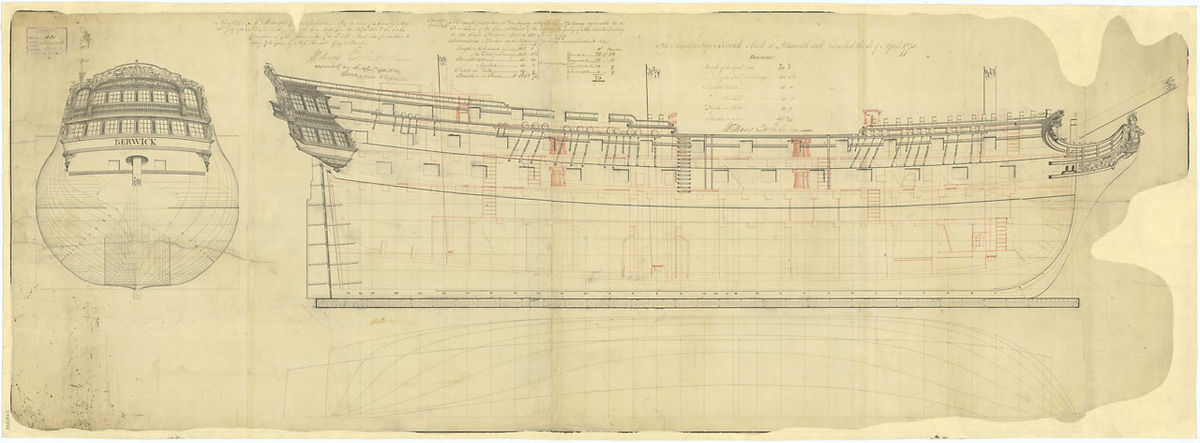
 en.wikipedia.org
en.wikipedia.org
1813 - HMS Laurestinus (22) wrecked in the West Indies
1846 - Lavinia Fanning Watson of Philadelphia christens the sloop-of-war USS Germantown, the first U.S. Navy ship to be sponsored by a woman.
 en.wikipedia.org
en.wikipedia.org
1862 - The screw frigate USS Wabash provides artillery support for Union infantry troops at the Battle of Pocotaligo, S.C. One of the gun crew, who was seriously injured, was Ordinary Seaman Oscar W. Farenholt, the first enlisted man in the Navy to reach flag rank. The battery from Wabash took part in artillery operations all along the South Atlantic coast.
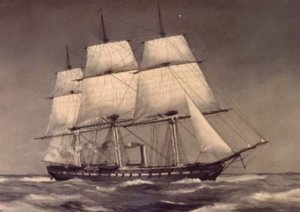

 en.wikipedia.org
en.wikipedia.org
1942 - The destroyers USS Mahan (DD 364) and USS Lamson (DD 367) sink the Japanese gunboat Hakkaisan Maru southwest of Tamana.
1962 - President John F. Kennedy orders a surface blockade of Cuba to prevent Soviet offensive weapons from reaching Cuba during the Cuban Missile Crisis. By forcefully employing U.S. naval forces, President John F. Kennedy is able to achieve his strategic objectives and deal with a dangerous and well-armed Soviet Union without war.
22nd of October
1633 – The Ming dynasty defeats the Dutch East India Company.
The Battle of Liaoluo Bay (Chinese: 料羅灣海戰; pinyin: Liàoluó Wān Hǎizhàn) took place in 1633 off the coast of Fujian, China; involving the Dutch East India Company (VOC) and the Chinese Ming dynasty's navies. The battle was fought at the crescent-shaped Liaoluo Bay that forms the southern coast of the island of Kinmen. A Dutch fleet under Admiral Hans Putmans was attempting to control shipping in the Taiwan Strait, while the southern Fujian sea traffic and trade was protected by a fleet under Brigadier General Zheng Zhilong. This was the largest naval encounter between Chinese and European forces before the Opium Wars two hundred years later
https://en.wikipedia.org/wiki/Battle_of_Liaoluo_Bay
1707 – Four British naval vessels run aground on the Isles of Scilly because of faulty navigation. In response, the first Longitude Act is enacted in 1714.
The Longitude Act was an Act of Parliament of the United Kingdom passed in July 1714 at the end of the reign of Queen Anne. It established the Board of Longitude and offered monetary rewards (Longitude rewards) for anyone who could find a simple and practical method for the precise determination of a ship's longitude. The Act of 1714 was followed by a series of other Longitude Acts that revised or replaced the original

Longitude Act - Wikipedia
1793 - HMS Agamemnon (64), Cptn. Horatio Nelson, met 5 French frigates and engaged Melpomene (40) before withdrawing.
The Action of 22 October 1793 was a minor naval engagement fought in the Mediterranean Sea during the War of the First Coalition, early in the French Revolutionary Wars. During the engagement a lone British Royal Navy ship of the line, the 64-gun HMS Agamemnon, attacked the French Navy large frigate Melpomène, part of a larger squadron, off the coast of Sardinia. Although Agamemnon chased Melpomène some distance through the night and inflicted significant damage, the French frigate was able to escape following the arrival of the rest of its squadron under Commodore Jean-Baptiste Perrée. The French ships later anchored in Corsican harbours to land reinforcements for the French garrison on the island, where the population was in open revolt.

The engagement is notable for being the first action of the war fought by Captain Horatio Nelson, then a junior captain in the Mediterranean Fleet. Nelson would go on to lead naval shore parties in the Invasion of Corsica the following year, during which the entire French squadron was captured or destroyed. He later achieved notable successes in a number of crucial battles during the war and is remembered as one of Britain's greatest military heroes.

Action of 22 October 1793 - Wikipedia

HMS Agamemnon (1781) - Wikipedia
1794 - HMS Centurion (50), Cptn. Osborn, and HMS Diomede (44) engaged and driven off from blockading Mauritius by French squadron Prudente (36), Cybèle (40), Jean Bart (20) and Courier (14).
The Battle of Île Ronde was a minor naval engagement between small French Navy and British Royal Navy squadrons off Île de France, now named Mauritius, in the early stages of the French Revolutionary Wars. The battle was fought over control of the waters around Île de France, which was under blockade from the British squadron as French warships and privateers operating from the island posed a significant threat to vital British trade routes connected to British India and China.

In an attempt to neutralise the island, the British commander in the region, Peter Rainier ordered the 50-gun HMS Centurion and 44-gun HMS Diomede to institute a blockade, which began in October 1794. Concerned by food shortages and a rebellious slave population the French naval commander Jean-Marie Renaud led his small squadron comprising frigates Cybèle and Prudente and three smaller vessels to drive off the British squadron. On 22 October, the squadrons met off Île Ronde, an islet off northern Île de France.
The battle lasted two and a quarter hours, in which Centurion and Cybèle fought a close duel which left both ships badly damaged. Supported by the remainder of the squadron, Cybèle successfully withdrew under fire, but Centurion, without support from the distant Diomede was also forced to retire for repairs. Unable to continue the blockade the British force returned to India, allowing food supplies to reach Île de France. Due to the necessity for campaigns against Dutch Ceylon and the Dutch East Indies, the British blockade was not renewed, but the French were unable to take advantage due to increasing civil unrest among the island's population.

Battle of Île Ronde - Wikipedia
1805 - Trafalgar prizes Berwick (74) and Fougueux (74) wrecked or foundered in a storm after the battle.
Berwick fought at the Battle of Trafalgar, where Achille re-captured her. Berwick sank near Sanlúcar in the tempest the following day after her French prisoners cut her cables. Although Donegal was nearby and quickly sent boats, many of the c.200 persons aboard Berwick lost their lives
Fougueux was driven ashore near Torre Bermeja on the coast of Spain and was wrecked. Only 25 men aboard, British prize crew and French prisoners, survived.

https://en.wikipedia.org/wiki/French_ship_Fougueux_(1785)

HMS Berwick (1775) - Wikipedia
1813 - HMS Laurestinus (22) wrecked in the West Indies
British Sixth Rate post ship 'Laurestinus' (1810)
British Sixth Rate post ship 'Laurestinus' (1810). Dates of service, name changes, previous and next incarnations, dimensions, armament, commanders, officers and crewmen, actions, battles, sources
threedecks.org
1846 - Lavinia Fanning Watson of Philadelphia christens the sloop-of-war USS Germantown, the first U.S. Navy ship to be sponsored by a woman.
USS Germantown (1846) - Wikipedia
1862 - The screw frigate USS Wabash provides artillery support for Union infantry troops at the Battle of Pocotaligo, S.C. One of the gun crew, who was seriously injured, was Ordinary Seaman Oscar W. Farenholt, the first enlisted man in the Navy to reach flag rank. The battery from Wabash took part in artillery operations all along the South Atlantic coast.


USS Wabash (1855) - Wikipedia
1942 - The destroyers USS Mahan (DD 364) and USS Lamson (DD 367) sink the Japanese gunboat Hakkaisan Maru southwest of Tamana.
1962 - President John F. Kennedy orders a surface blockade of Cuba to prevent Soviet offensive weapons from reaching Cuba during the Cuban Missile Crisis. By forcefully employing U.S. naval forces, President John F. Kennedy is able to achieve his strategic objectives and deal with a dangerous and well-armed Soviet Union without war.




